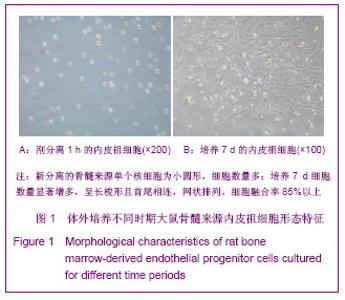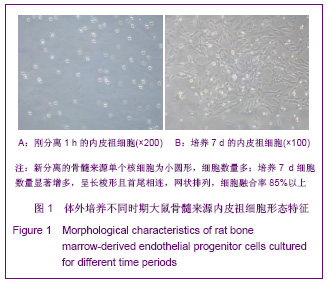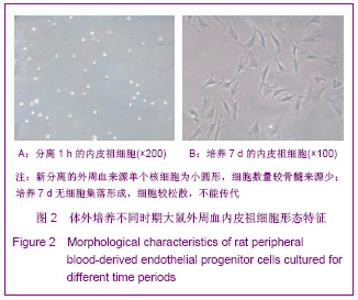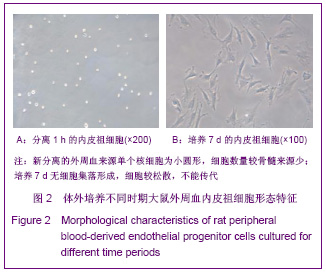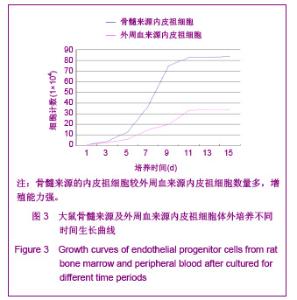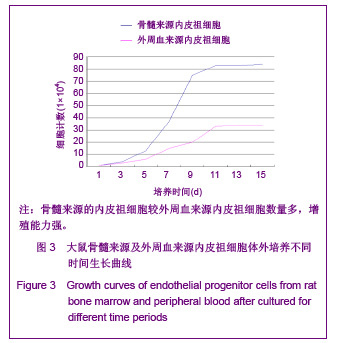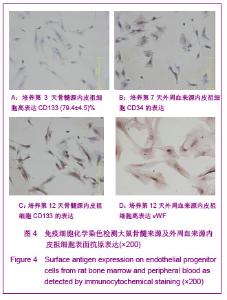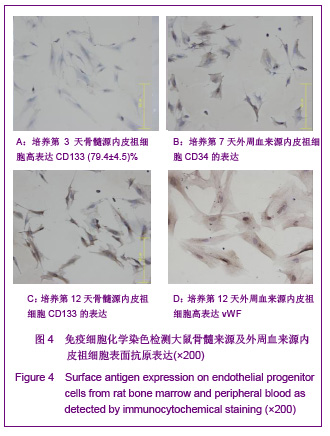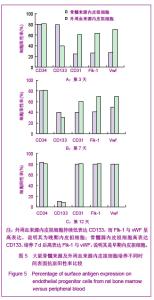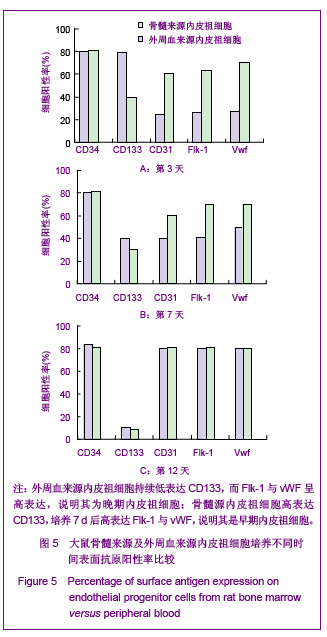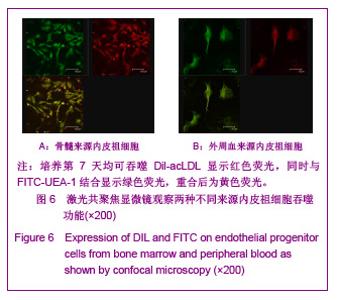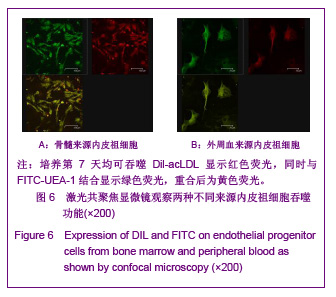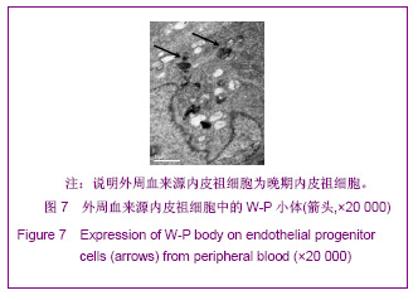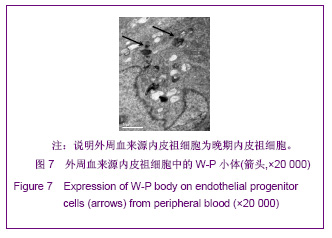| [1] Hristov M, Erl W, Weber PC.Endothelial progenitor cells: mobilization, differentiation, and homing.Arterioscler Thromb Vasc Biol. 2003;23(7):1185-1189.[2] Hirschi KK, Ingram DA, Yoder MC.Assessing identity, phenotype, and fate of endothelial progenitor cells.Arterioscler Thromb Vasc Biol. 2008;28(9):1584-1595.[3] Mukai N, Akahori T, Komaki M, et al.A comparison of the tube forming potentials of early and late endothelial progenitor cells.Exp Cell Res. 2008;314(3):430-440.[4] Duan HX, Cheng LM, Wang J, et al.Angiogenic potential difference between two types of endothelial progenitor cells from human umbilical cord blood.Cell Biol Int. 2006;30(12): 1018-1027.[5] Ren JL, Wang ZG, Zhang Y,et al.Transfection efficiency of TDL compound in HUVEC enhanced by ultrasound-targeted microbubble destruction.Ultrasound Med Biol. 2008;34(11):1857-1867.[6] Liu XX, Hu JF.Shiyong Linchuang Yixue. 2010;11(4):125-168. 柳晓霞,胡坚方.SDF-1/CXCR4介导骨髓干细胞归巢至损伤肝脏的研究进展[J].实用临床医学,2010,11(4):125-168.[7] Odörfer KI, Walter I, Kleiter M, et al.Role of endogenous bone marrow cells in long-term repair mechanisms after myocardial infarction.J Cell Mol Med. 2008;12(6B):2867-2874.[8] Zhang HF, Zhao ZG.Shiyong Zhenduan yu Zhiliao Zazhi. 2010;19(4):270-272. 张会峰,赵志刚. 内皮祖细胞及其治疗下肢缺血疾病的研究进展[J]. 实用诊断与治疗杂志,2010,19(4):270-272.[9] Devanesan AJ, Laughlan KA, Girn HR,et al.Endothelial progenitor cells as a therapeutic option in peripheral arterial disease.Eur J Vasc Endovasc Surg. 2009;38(4):475-481. |
